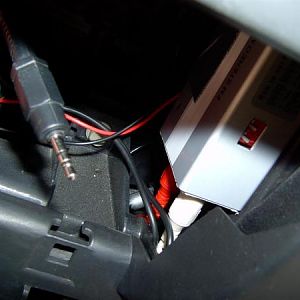Hopefully this isn't a duplicate. I did my best to search around first and found some threads with similar issues, but nothing quite the same.
The vehicle: 2003 Liberty Limited 3.7L 4WD, 216K miles.
Recently I've been having an issue where kickdown causes my voltage to spike from ~13.7v up to ~18v. Among the other dangers to battery and electronics, this causes the instrument cluster to go wonky, requiring a cluster exerciser test to fix.
So far kickdown is the only thing I've found that's causing the voltage spike to happen.
Symptoms/Info:
1) Only happens at kickdown (that I've experienced, at least).
2) Immediately returns to normal voltage when backing off the throttle.
3) No CEL, Battery Light, or Fault Codes on my ODB reader.
4) Possibly louder-than-normal whine at kickdown.
5) Possibly running very slightly rougher overall.
6) It has been HOT lately (~110°F).
7) I checked the fusible link between alternator and POS battery connector and have continuity.
8) Removed, contact cleaned, and replaced both the fusible link and the 2-pin connector on the alternator.
9) 2-pin-to-PCM wiring and connector seems to be in good shape, but I haven't had a chance to take a multimeter to it yet.
10) In the same timeframe this began happening, the water pump developed a small leak, with evidence of small amounts of coolant being sprayed around the engine bay.
11) There is a bit more grime buildup within the immediate vicinity of the alternator. It does not seem to have any scent, either oil or coolant.
Normally with a voltage regulation issue I'd suspect it's the PCM, as I understand that to be what's doing the actual regulation.
However I think I'm leaning alternator when looking at the overall symptom list. Between the louder whine, the possible increase in NVH, the wiring and connectors seemingly being ok, coolant, grime, etc. Would issues with the alternator be capable of overriding the PCM's voltage regulation?
I've also heard that the battery temperature sensor can cause voltage issues?
Any help in deducing the culprit would be greatly appreciated. I'm really hoping to avoid the costs of replacing the wrong part.
Thanks.
The vehicle: 2003 Liberty Limited 3.7L 4WD, 216K miles.
Recently I've been having an issue where kickdown causes my voltage to spike from ~13.7v up to ~18v. Among the other dangers to battery and electronics, this causes the instrument cluster to go wonky, requiring a cluster exerciser test to fix.
So far kickdown is the only thing I've found that's causing the voltage spike to happen.
Symptoms/Info:
1) Only happens at kickdown (that I've experienced, at least).
2) Immediately returns to normal voltage when backing off the throttle.
3) No CEL, Battery Light, or Fault Codes on my ODB reader.
4) Possibly louder-than-normal whine at kickdown.
5) Possibly running very slightly rougher overall.
6) It has been HOT lately (~110°F).
7) I checked the fusible link between alternator and POS battery connector and have continuity.
8) Removed, contact cleaned, and replaced both the fusible link and the 2-pin connector on the alternator.
9) 2-pin-to-PCM wiring and connector seems to be in good shape, but I haven't had a chance to take a multimeter to it yet.
10) In the same timeframe this began happening, the water pump developed a small leak, with evidence of small amounts of coolant being sprayed around the engine bay.
11) There is a bit more grime buildup within the immediate vicinity of the alternator. It does not seem to have any scent, either oil or coolant.
Normally with a voltage regulation issue I'd suspect it's the PCM, as I understand that to be what's doing the actual regulation.
However I think I'm leaning alternator when looking at the overall symptom list. Between the louder whine, the possible increase in NVH, the wiring and connectors seemingly being ok, coolant, grime, etc. Would issues with the alternator be capable of overriding the PCM's voltage regulation?
I've also heard that the battery temperature sensor can cause voltage issues?
Any help in deducing the culprit would be greatly appreciated. I'm really hoping to avoid the costs of replacing the wrong part.
Thanks.
Last edited:










